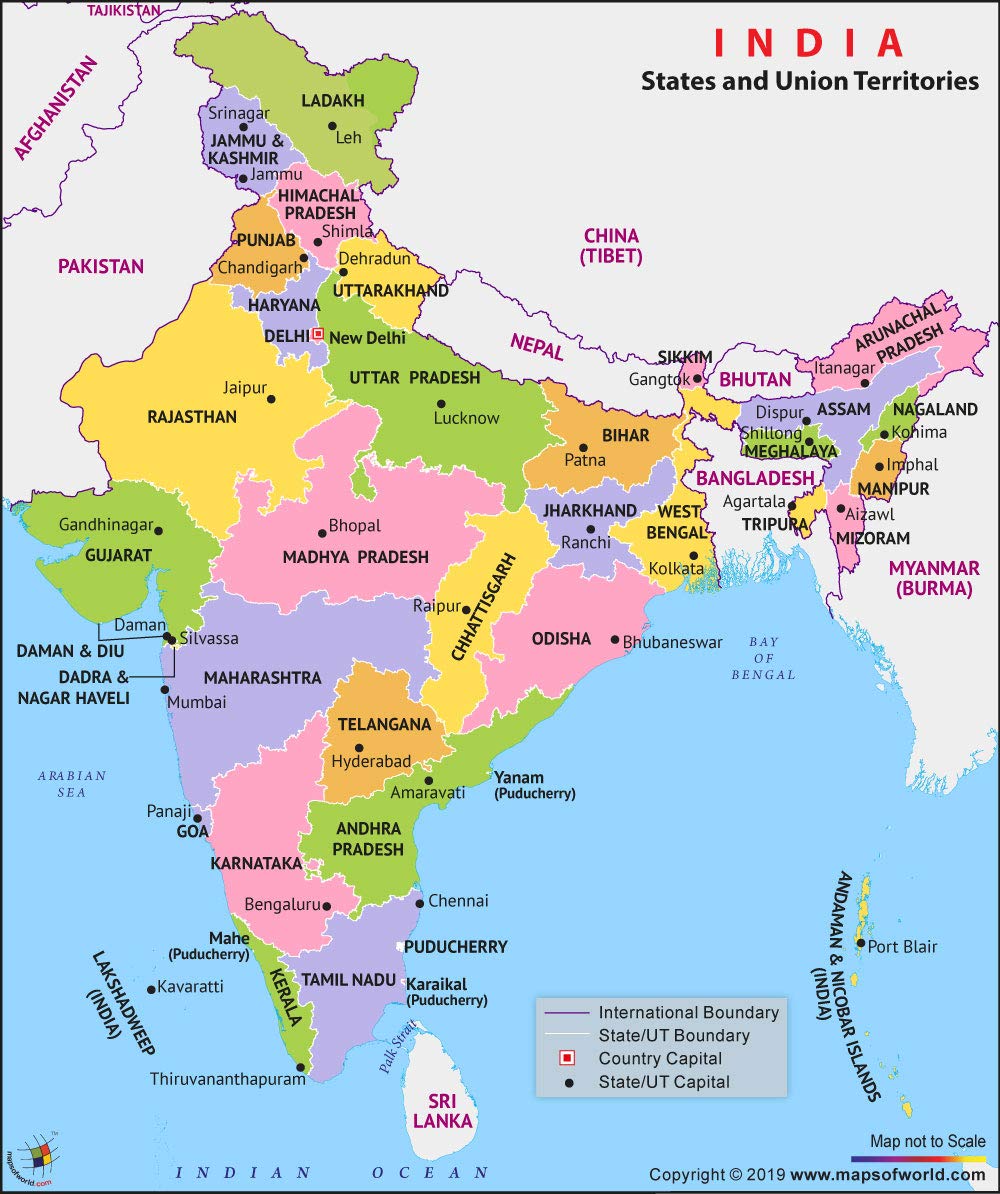Is Formation of districts in India-hectic task?
(Relevant for GS paper-2)
The development of cities and towns at the grassroots level is critical for the development of a country. Creation of districts plays a critical role in governance; however, the cost to the exchequer and needs of locals need to be considered as well.

India has come a long way on the path of social and economic development since Independence, thanks to policies and administration for the upliftment of citizens in every nook and cranny.
Policymakers and governments intend to pass on the policy benefits to each citizen in every corner of the country. This requires governance and administration in local regions, including cities, towns and villages.
The Constitution of India has a provision to make panchayats, talukas and districts across states of India with the core objective of decentralisation and inclusive growth.
A district enjoys multiple benefits in terms of endowments from the government for local administration and development. In the quasi-federal system of India, the authority of district formation lies with the respective states.
District formation can either be done through an executive order or by passing a law in the state assembly. Many states prefer the executive route by simply issuing a notification in the official gazette.
Typically, bigger states have a larger number of districts as compared to smaller states. Over time, the number of districts has been increasing in India. Today, India has about more than 700 districts across states.
This is due to the increasing population and the need for better administration and development requirements.
District formation comes with many advantages for the state. It helps in better administration and governance. It ensures that citizens’ voices are heard on time and the welfare schemes’ benefit reaches the country’s remotest corners.
The formation of districts leads to the development of infrastructure, including transportation, telecommunication, water, sanitation, health, education and power facilities.
A good infrastructure attracts potential investors and investments. New businesses and industries emerge and existing ones expand. This generates employment opportunities for the citizens in and around the district.
Healthy employment means a healthy income for citizens that further translates into investments. This investment again goes back to industries to generate more employment, more income and thus better growth.
This virtuous cycle of investment and growth continues, which is the ultimate objective of government. In sum, formation of a district in a state brings mutual benefit for both citizens and government.
We can cite the examples of the new districts Bhatapara-Baloda Bazar and Sarguja in Chhattisgarh that witnessed better roads, water, education, health and power facilities after getting the district status.
Similarly, new districts in other states such as Mulugu and Narayanpet in Telangana, Khunti in Jharkhand, Alipurduar in West Bengal and Tenkasi, Tirupattur, Ranipet, Chengalpet and Kallakurichi in Tamil Nadu experienced a sense of development however at a varying level.
The question that arises is what limits a state to declare each place a district. The answer lies in the cost associated with the formation of a district. A district requires installing administrative offices and deploying officers and public servants.
This adds to the burden on the government exchequer. In fact, some state governments have come up with the idea of district formation by combining many towns of potential distances to optimise the operational cost and satisfy citizens’ demands.
However, such plans cause social unrest and hue and cry among the citizens of the towns. This can lead to economic loss and decay of public trust in the administration and government of the states.
The most recent example of multi-town district formation is Chhattisgarh state, which came up with three new districts — Mohla-Manpur-Ambagarh Chowki; Sarangarh-Bilaigarh and Khairagarh-Chhuikhadan-Gandai.
During the formation of these districts, the state government announced a gift of funds for development, promising to offer new opportunities for upliftment in health, education, and connectivity.
However, disputes and challenges surfaced on the ground for fund allocation to the component towns that together form a district. For instance, Mohla getting a higher priority than Manpur and Ambagarh Chowki is a self-igniting issue among the latter’s citizens.
In sum, any political change regarding the formation of a district in a state comes with its own advantages and challenges. Thus, the government and policymakers must mull over the decision and perform a cost-benefit analysis before district formation.
It is also essential to consult the local people who are the end beneficiaries of the decision to understand their aspirations and win their confidence.
This will potentially mitigate the issues and conflicts between people and government and thereby satisfy the people’s needs at large, which is essential for inclusive growth of state and nation.

